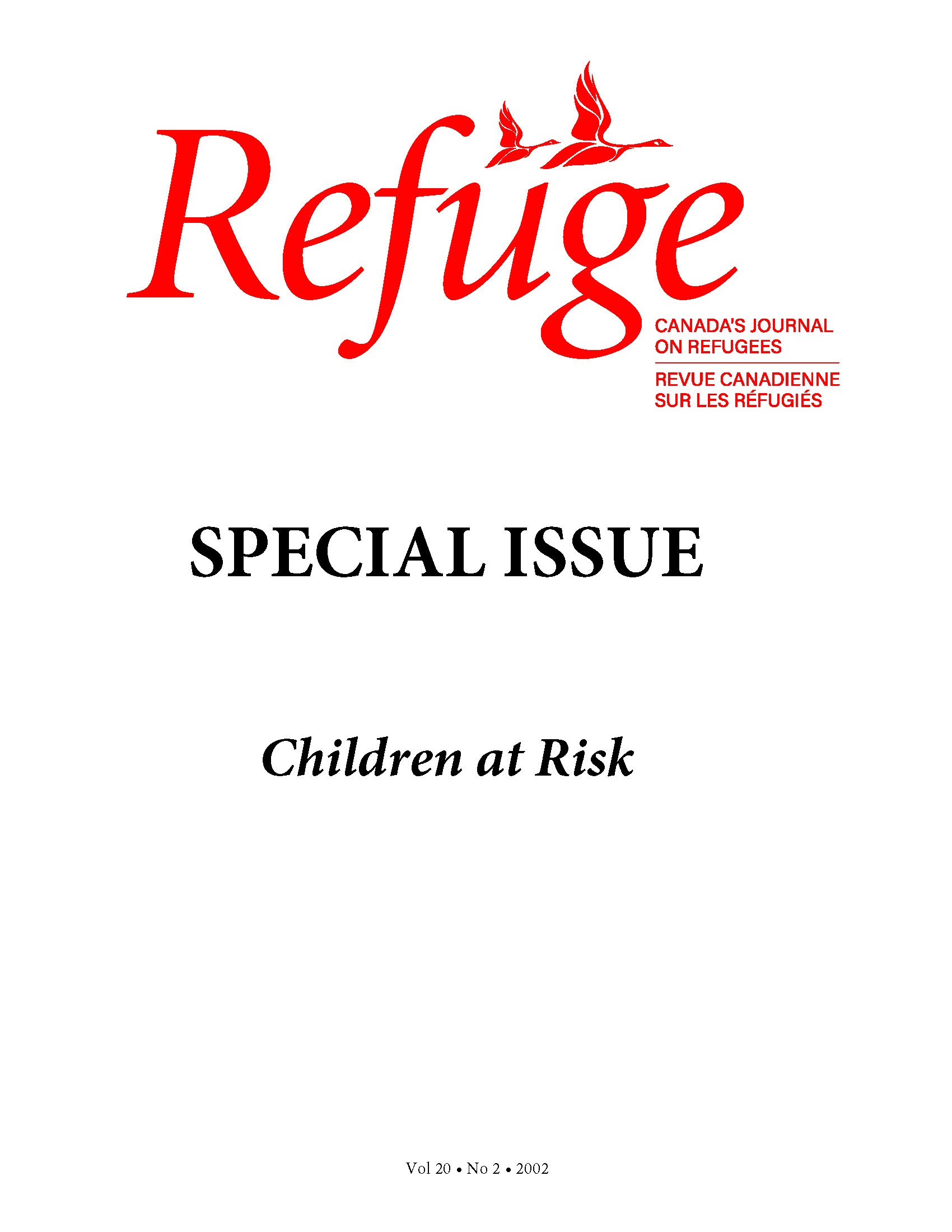The Rights of Internally Displaced Children: Selected Field Practices from UNICEF’s Experience
DOI :
https://doi.org/10.25071/1920-7336.21252Mots-clés :
UNICEF, forced migration, internally displaced persons, children, human rights, field practicesRésumé
Les personnes déplacées représentent un problème humanitaire critique—40 millions de personnes sont déplacées par suite de conflits et autres crises humanitaires. Environ la moitié des personnes déplacées dans le monde sont des enfants. Les enfants en fuite sont beaucoup plus vulnérables à la malnutrition et aux maladies, aux dangers physiques et au trauma psychologique. Beaucoup d’entre eux ne survivent pas. Ceux qui s’en sortent se retrouvent avec des chances diminuées de pouvoir vivre une vie normale—beaucoup d’entre eux n’ont pas accès à l’éducation et aux soins de santé. Cet article examine des exemples sélectionnés du travail accompli sur le terrain par UNICEF auprès des personnes déplacées. Le travail de UNICEF avec des enfants et des familles déplacés est axé autour de quatre domaines : 1) la défense de leurs droits ; 2) l’évaluation ; 3) le soin ; et 4 ) la protection. Des conclusions et des recommandations basées sur la pratique sur le terrain sont aussi présentées.Statistiques
Téléchargements
Publié-e
Comment citer
Numéro
Rubrique
Licence
© Subajini Mahalingam, Geeta Narayan, Esther van der Velde 2002

Cette œuvre est sous licence Creative Commons Attribution - Pas d'Utilisation Commerciale 4.0 International.
Les auteurs qui publient dans Refuge conservent le droit d’auteur associé à leur œuvre, et octroient au public une licence Creative Commons Attribution - Utilisation non commerciale 4.0 International. La licence permet l’utilisation, la reproduction et l’adaptation du matériel avec attribution par tous moyens et sous tous formats pour des fins non commerciales. Pour des informations générales sur les licences Creative Commons, visitez le site Creative Commons. Pour la licence CC BY-NC 4.0, consultez le résumé lisible par l'homme.







